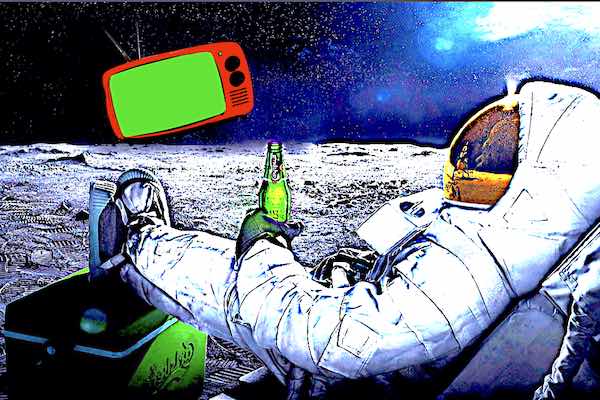
Hudson Valley Public Relations
Essential Search Engine Optimization Tactics
By Andrew Ciccone | Published | No Comments
Search Engine Optimization (SEO) Tactics
[This is the second in a three-part series about Search Engine Optimization. Read Part One here]

In our first installment on search engine optimization (SEO) we covered introductory methods of enhancing a website’s presence in SERPs. Here we’ll go more in-depth on previously discussed strategies and explore more advanced tactics to enhance optimization even further.
Permalinks and URLs. Content management systems (CMS) like WordPress are website creation tools that build websites in an SEO friendly way. By creating permalinks (permanent URLs) they add keywords to the site’s title.
Example: Sarah’s Cupcakes. Sarah’s website is SarahsCupcakes.com and her blog is titled “Red Velvet Cupcake Recipe.” Instead of a garbled mix of letters and numbers, WordPress will create a more readable URL for that page.
Instead of the URL SarahsCupcakes.com/231ghek7/578.htm the permalink would read SarahsCupcakes.com/red-velvet-cupcake-recipe. By using text instead of number, the web bots that crawl your site will identify keywords (in this case that are part of the recipe for red velvet cupcakes). Most CMS such as WordPress allow users to customize their site pages and posts URL’s to display (dates, volume, or words). Descriptive words are what people search for, the search engines realize this and rank you sites based on the keywords.
Meta Data. Meta data is critical information used by search engine results pages (SERPs). It consists of . . .
1. The Meta Title which is the webpage’s title. Google will display up to 60 characters in a title before truncating the rest (your keyword for the post/page should be included in the title).
2. The Meta Description appears below the meta title and further describes what the page is about. Meta descriptions are allowed up to 160 characters (your keyword for the post/page should be included in the description).
3. Meta Tags are keywords that further describe the page. At one time they may have been important for SEO, but Google’s Matt Cutts has stated that their algorithms no longer use them. The meta tags are not relevant to SEO, but can be helpful when navigating within the site’s search bar for relevant information.
Clean metadata is more pleasing to the eye and improves the likelihood that a user will click on a link to your website’s page. WordPress offers plugins like All In One SEO or Yoast’s WordPress SEO that simplify the process of adding metadata.
White Hat vs. Black Hat. In a way, SEO is a game and like any game, there are rules. Play by the rules and you’re rewarded. Try to cheat and be penalized. Google recognizes some strategies as acceptable and others as unacceptable. White hat tactics are considered best practices. That’s what any good SEO professional should focus on. Black hat tactics are dishonest. Unethical ways of trying to improve SEO. They should be avoided at all costs.
Black Hat Tactics to avoid:
- Keyword stuffing. Don’t overload your webpages with keywords – it typically makes pages and posts less desirable to read. Search engines don’t like it. Focus on quality copy instead.
- Don’t engage in rampant link building. There are plenty of unscrupulous entities who will offer to host a link to your site in return for payment. They then create websites full of random links in order to boost rankings. This is SPAM and Google recognizes it as such.
- Invisible text. Some web designers will hide white text on a white background in order to cram more keywords into a web page while still preserving the overall appearance. As a form of keyword stuffing, it has the same ill effects. The FBI will be notified if you attempt this Black Hat tactic.
Google will penalize you if you employ Black Hat SEO tactics. In fact, you will not rank at all if you knowingly or unwittingly practice Black Hat tactics. Raper Rap Genius’s music lyrics website Rap Genius was removed from Google’s search results because of shady SEO tactics.
Google pays close attention and updates the best practices rules periodically. Stay ahead of the game. Reputable PR and SEO firms employ White Hat tactics that result in long lasting gains. Subscribe to Google’s Best Practices Newsletter.
Site Map. Most websites (especially those with lots of pages) have a site map. The site map summarizes a list of links to all the pages on your site. A Sitemap is important because it tells the search engines about the content that you have on your site and how often it’s updated. This helps with search engine optimization because it makes it easier for Google to find out about the content on your site so that they can serve it up in the search results.
WordPress offers PlugIn’s that can be installed for a site map for your website.
Google Analytics. Marketers are always evaluating their efforts and adjusting as needed to improve their ROI. Google Analytics, in conjunction with Google Webmaster Tools are powerful marketing tools for you to gain valuable insights for your business. By tracking website visits, and keyword analysis you can improve your site’s ranking. Analytics also provide key insights into your core stakeholders.
There are many ways to install Google Analytics and WordPress offers plenty of PlugIn’s that simplify the process. Additionally, SEO is just one of many reasons to use Analytics – it’s a critical tool for any website.
Social Bookmarking. Social bookmarking is an SEO tactic that shares your content on social media platforms such as Twitter and Facebook. By doing so, you will bookmark your content on the world wide web as these platforms have sizable audiences. Upon searching your website will be more readily found thus, increasing your site’s perceived influence.
Stick to high quality social bookmark sites and avoid low quality sites that Google will determine to be SPAM. Links to your site are only effective if they come from a reputable source and bad links can have a negative effect.
In the search engine optimization field, strategies and techniques are always changing. Use good judgment and carefully evaluate new methodologies before incorporating them into your SEO strategy.
In Part Three we sit down with Ric Dragon, CEO and founder of DragonSearch Marketing. To learn more about search engine optimization give us a call at 845.202.7087 or visit our website at www.hudsonvalleypublicrelations.com.

Telephone No.845-202-7087





